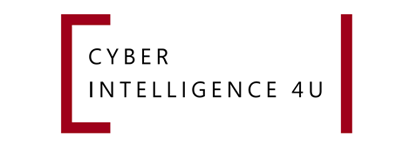Cybersecurity Insurance in Digital Business Certificate Program
-
 Online
Online
-
 On-Demand
On-Demand
-
 Pace University Certified
Pace University Certified
The Cyber Insurance in Digital Business Course is a certification program which provides agents, reinsurance experts and brokers with a deeper understanding of industry best practices in cyber security risk management, governance, privacy, compliance and operations. Students will learn what high-performing agents and brokers need to know in order to thrive in their roles, including how to interact with executive leadership of potential customers, how to provide analysis and support in effective cyber risk management, and how to build and maintain strong relationships with prospective cyber risk insurance clients.
What you will learn
The Cyber Insurance in Digital Business Course is a certification program which provides agents, reinsurance experts and brokers with a deeper understanding of industry best practices in cyber security risk management, governance, privacy, compliance and operations.
Students will learn what high-performing agents and brokers need to know in order to thrive in their roles, including how to interact with executive leadership of potential customers, how to provide analysis and support in effective cyber risk management, and how to build and maintain strong relationships with prospective cyber risk insurance clients:
- Knowledge of the latest cybersecurity risks and regulations
- Cyber financial risk quantification and its uses for companies
- Understanding of best practices in cybersecurity
- Regulatory challenges to prepare for compliance
The Cybersecurity Insurance in Digital Business Course is a rigorous 5-day self-paced online curriculum led by prominent cybersecurity experts, many of whom advise governments, insurance firms, and industry bodies around the world. The course brings together executives, experts, innovators, and regulators to address cybersecurity from a digital point of view and leaves the student empowered.
Students will be empowered by:
- The ability to understand cyber holistically from a business perspective across regulation, compliance, security standards and risk. Students will be able to strategize how to lower cyber risk and work with stakeholders to increase cyber resilience.
- An in-depth understanding of cyber exposures and scores that determine crown jewel exposures, identify hidden exposures, determine cyber insurance adequacy, risk accumulation metrics and actuarial analysis using digital assets.
Course Book:
Managing Cyber Risk, from Routledge Publishing
During labs, students will implement digital asset inventories, risk models for quantification, and utilize reports for essential board reporting. The total time committed to labs is about 20% of the course.
Lab 1: Digital Asset Inventory
Lab 2: Financial Cyber Risk Quantification Modeling
Lab 3: Cyber Insurance Limits
Lab 4: Controls
Lab 5: Risk Accumulation Metrics
Lab 6: Application Improvements
Key Takeaways:
- Allows insurers to calculate financial exposures.
- Provides CISO oversight to the insurance application process.
- Develops KPIs that demonstrate financial impact of cyber events.
- Provides a holistic view of cyber, privacy and risk.
- Relates financial metrics to protecting digital assets.
- Allows teams to understand risk accumulation in cybersecurity.
- Allows students to model cyber risk.
Skills Learned:
- Digital Asset Methodology
- Risk Modeling for actuarial analysis
- Understand and analyze risk in the cloud and on premise
- Turn cybersecurity insurance into a profit center
- Get up to speed quickly on emerging technology security issues and terminology
- Align applications to cyber risks
- Understand the meaning of missing controls as they relate to cyber risk
What you will receive:
- Hands-on lab for cyber risk quantification
- Weekly chats with the chair to ask any questions
- Dedicated program manager to assist with technical issues
- Electronic courseware containing the entire course content
- Course books – available for purchase
- Access to repeatable interactive hands-on labs
- MP3 audio files of the complete course lecture
Who should attend:
This program is ideal for the following roles and departments:
- Carriers
- Cyber Insurance Broker
- Reinsurance Specialist
- Business Development Professions in Cyber Insurance
Syllabus
Module 1: The Evolution of Cybersecurity & Cybersecurity Basics
Module Description
This module introduces cybersecurity from a business point of view based on research with the Fortune 1000 and cyber insurance industry using a digital asset methodology. In 2001, 10% of a business was digital, today 85% of an organization’s value is digital. The module focuses on building student understanding of cybersecurity from how cyber insurance evolved out of property and casualty into a true digital asset-based program. It addresses key cyber-related business consequences and demonstrates the consequences of poor cyber hygiene and reviews cybersecurity trends that impact the insurance industry.
In addition to the evolution of cyber from an insurance perspective, students learn to communicate in the language of cybersecurity, study data breaches and business interruptions and their impact on the firm from a financial and insurance outlook, attack surfaces, enterprise threats of today and enterprise cybersecurity programs components.
Each student is required to conduct a data breach case study and do an online lab. The lab assignment is an inventory of digital assets of their organization or a fictious or public organization. The lab uses the ValuRisQ platform.
Digital Asset Inventories contain about a dozen attributes needed for cyber risk quantification and scoring that will be performed in later modules. The digital asset inventory aims at identifying crown jewel assets and validating the key attributes used in cyber risk scoring related to the asset behavioral and user behavioral analytics.
Here are the main digital asset objectives found in organizations:
- Systems – Sets of technologies purchased or developed by organizations for specific business purposes. Relates to data exfiltration metrics.
- Technologies – computer related components that typically consist of hardware and software, databases, messaging, and devices. Relates to technology risks, assessments, and systems.
- Processes – a set of digital rules that are utilized by one or more systems to take inputs, transform them, and produce outputs that are reported or utilized by other systems. Relates to business interruption exposures and risks.
- Data Types – information that is processed and stored. Data can be classified into different types including privacy, credit card, intellectual property, customer data, supply chain data, etc. and relates to regulatory exposures.
Module Grade
Each student is expected to satisfy the following requirements:
- Quizzes (30%)
- Data Breach Case Study Assignment (20%)
- Digital Asset Lab (50%)
Module 2: Regulations, Standards and Frameworks
Module Description
This module introduces cybersecurity regulation based on industry, geography, government, and data type. It explores standards and frameworks aligning them to security control tests. Regulations covered at the Federal level are the Healthcare Information Portability and Accounting Act (HIPAA), Securities Exchange Commission (SEC), Graham Leach Bliley Act (GLBA), and the Fair Practices Act. Regulations at the state level focus on new privacy laws including the California Consumer Protection Act (CCPA), State privacy acts in Maine, Nevada, Colorado, and the New York State Department of Financial Services Part 500 (NY CRR 500) and the Insurance Data Security Act. The module covers both organizational and third-party requirements.
The module explores each control test, their use, and how to conduct the tests in a lab environment. Each student is required to do an online lab. The lab assignment is a security assessment of a system at their organization or a fictious or public organization. Security Assessments can be prescriptive or not. Controls can be mapped across frameworks.
Here are the main objectives found in this module are to map control assessment requirements to the following laws:
- Federal Regulations – Including FTC, FCC, OCIE, HHS and GLBA Laws
- State Regulations – Including CCPA, NYS DFS, State Privacy Laws, and the Insurance
Data Security Act
- Industry Standards – Including PCI
- European Regulations – Including GDPR
- Frameworks – Including ISO27001, PCI-DSS, NIST 800-53, NIST CSF, COBIT, CIS Top 20 Controls, etc.
- Technology Regulations – Including BIPA 740 ILCS/14 and Public Act 095-994 Biometric Information Privacy Act and California IoT Security Act
Module Grade
Each student is expected to satisfy the following requirements:
- Quizzes (50%)
- Security Assessment Lab (50%)
Module 3: Cyber Insurance Overview
Module Description
This module includes Cyber incident response trends and statistics, Cyber threat environment
Hot Topics, Cyber risk management 101, Traditional cyber insurance coverage, Gap analysis discussion (Cyber/ Other P&C Products) and compares cyber insurance stand-alone policy attributes to property and casualty policy attributes and identities the typical gaps in the coverage. Covers TPRM aspects of shared responsibility model for control effectiveness.
The module also explores the hardening cyber market causes and conditions in a post covid world.
Here are the main objectives found in this module are understand cyber independently and interdependently with Casualty and Property covering:
- Coverage Types
- First Party Coverage
- Third Party Coverage
- Gaps and Overlaps
Module Grade
Each student is expected to satisfy the following requirements:
- Quizzes (100%)
Module 4: Digital Asset Quantification
Module Description
This module provides cyber risk metric quantification for financial exposures aligned to how the carrier will pay a cyber insurance claim. Each metric has been vetted with the cyber insurance industry, academic and analyst community. Financial quantification is the beginning of understanding limits adequacy, risk accumulation metrics and actuarial analysis.
The main objectives found in this module are to learn how to calculate cyber financial exposures including:
- Data Exfiltration Exposure
- Ransomware Exposure
- Business Interruption Exposure
- Regulatory Exposures
- GDPR
- CCPA
- NYS DFS
- HIPAA
- Privacy State Regs
- International Regs
Module Grade
Each student is expected to satisfy the following requirements:
- Quizzes (30%)
- Security Assessment Lab (70%)
Module 5: Cyber Insurance Limits Adequacy
Module Description
This module uses the digital asset approach to quantify accurate limits and identify hidden exposures that are greater than the cyber insurance limit with mitigating recommendations to reduce that risk.
The main objectives found in this module are to learn how to calculate cyber insurance limits and sublimits including:
- Data Exfiltration Limit
- Ransomware Dependent Sublimit
- Ransomware Non-Dependent Sublimit
- Business Interruption Dependent Sublimit
- Business Interruption Non-Dependent Sublimit
- Regulatory Sublimits
- GDRP
- US Privacy
- PCI
- Healthcare
Module Grade
Each student is expected to satisfy the following requirements:
- Quizzes (30%)
- Security Assessment Lab (70%)
Module 6: Cyber Insurance Risk Scoring
Module Description
This module uses the digital asset approach to score the inherent cyber risk. Inherent cyber risk can be used understand the likelihood that a company will have specific cyber events or incidents based on their digital asset behavioral and user behavior. Mitigating recommendations can be made to lower these risks.
The main objectives found in this module are to learn how to attributes related to the likelihood calculations associated with inherent cyber risk including:
- PAM Risk
- IDAM Risk
- Technology Risk
- Location Risk
- Access Risk
- Interface Risk
- User Risk
- Privacy Risk
- Confidentiality Risk
- Integrity Risk
- Availability Risk
- Dozens of Others
Module Grade
Each student is expected to satisfy the following requirements:
- Quizzes (30%)
- Security Assessment Lab (70%)
Module 7: Cyber Controls
Module Description
This module allows students to understand cybersecurity controls across multiple frameworks and to align the risk mitigation effectiveness to the controls.
The main objectives found in this module include understanding cyber controls from a likelihood perspective. Controls covered include:
- Access Controls
- Encryption Controls
- IDAM Controls
- PAM Controls
- Vulnerability Controls
- Patch Management Controls
- User Awareness Controls
- End Point Security Controls
- Application Security Controls
- Dozens of Others
Module Grade
Each student is expected to satisfy the following requirements:
- Quizzes (30%)
- Security Assessment Lab (70%)
Module 8: Continuous Control Monitoring
Module Description
This module allows for the continuous monitoring of cyber controls. Inherent cyber risk can be used understand the likelihood that a company will have specific cyber events or incidents based on their digital asset behavioral and user behavior. Mitigating recommendations can be made to lower these risks.
The main objectives found in this module are to learn how to attributes related to the likelihood calculations associated with inherent cyber risk including:
- PAM Risk
- IDAM Risk
- Technology Risk
- Location Risk
- Access Risk
- Interface Risk
- User Risk
- Privacy Risk
- Confidentiality Risk
- Integrity Risk
- Availability Risk
- Dozens of others
Module Grade
Each student is expected to satisfy the following requirements:
- Quizzes (30%)
- Security Assessment Lab (70%)
Module 9: Risk Accumulation Metrics
Module Description
This module provides the student with the means to understand risk accumulation metrics in cyber insurance. Using the digital asset approach allows for aggregation of risk across the portfolio from a digital perspective.
The main objectives found in this module are to understand the different types of risk accumulation and to calculation them including:
- Cloud Risk
- IoT Risk
- Technology Risk
- Location Risk
- Access Risk
- Interface Risk
- User Risk
- Privacy Risk
- Confidentiality Risk
- Integrity Risk
- Availability Risk
- Dozens of others
Module Grade
Each student is expected to satisfy the following requirements:
- Quizzes (30%)
- Security Assessment Lab (70%)
Module 10: Good Cyber Hygiene Discounts
Module Description
This module provides the student with the means to understand how to provide a cyber discount program based on good cyber hygiene. Each student will be able to utilize the cyber controls to determine how to discount policies based on risk mitigation.
The main objectives found in this module include the ability to map behavior to control mitigation and create discount models based on the following:
- Access Controls
- Encryption Controls
- IDAM Controls
- PAM Controls
- Vulnerability Controls
- Patch Management Controls
- User Awareness Controls
- End Point Security Controls
- Application Security Controls
- Dozens of Others
Module Grade
Each student is expected to satisfy the following requirements:
- Quizzes (30%)
- Security Assessment Lab (70%)
Certification
You will get a certification in Cybersecurity Insurance in Digital Business Program from Pace University.
Tech Requirements
- Internet access
- Mobile phone for two-factor authentication
All labs in this course are focused on using our browser. We recommend Edge or Google Chrome.
Pricing and Details:
No prerequisite or experience necessary. Course can be completed over a 3 month period and will take an estimated 20 hours to complete.
